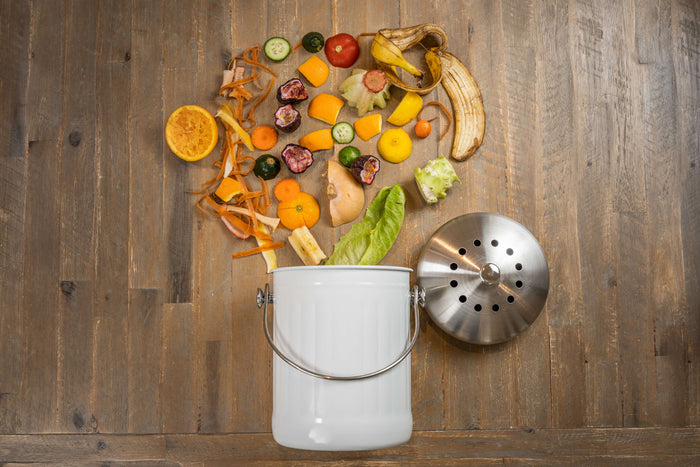Features to look for in a kitchen compost bin

Sometimes called indoor compost, compost caddy, countertop compost bin, bench top compost bin, kitchen composter, kitchen scrap bin or ice cream container - these bins can help households compost their waste rather than send it to landfill.
The main purpose of a kitchen compost bin is to hold your food scraps for a couple of days before you empty them into your Food Organics and Waste Organics (FOGO) wheelie bin (if your council offers this service) or outdoor composting system.
Ideally, you want your compost bin to look stylish on your bench, without attracting fruit flies and emanating any odours.
Here are some features to look out for when purchasing a compost bin:
- Charcoal Filters: Charcoal filters are usually placed in the lid and are designed to absorb bacteria, smells and moisture that emanates from food waste. They should last up to 3 months before losing the absorption ability
- Ventilation: Holes in the lid of the compost bin helps to reduce moisture, the main cause of unpleasant odours
- Airtight lid: An airtight lid helps keep the smells in the compost bin rather than in the kitchen, plus helps prevent fruit flies
- Size: A 5 litre compost bin is compact enough to sit on the bench, but large enough to hold a couple of days of waste depending on household size
- Material: Stainless steel can look sleek on your bench and match other appliances
- Ease of cleaning: It’s best if the compost bin can be easily washed with soapy water and won’t rust
- Light weight with handle: Compost bins that are light weight and come with a handle allow you to easily transfer waste to your FOGO bin or outdoor compost bin
To shop kitchen compost bins, visit The Compost Co products page


